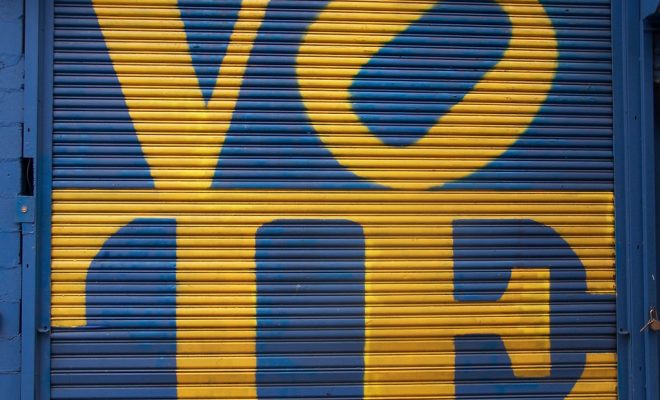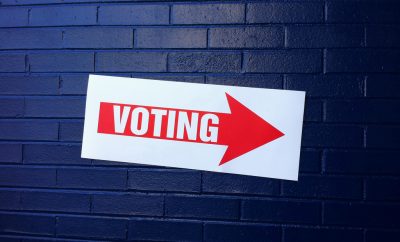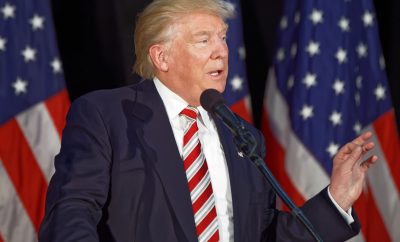 Image courtesy of [brooklyntheborough via Flickr]
Image courtesy of [brooklyntheborough via Flickr]
Politics
U.S. Elections: Americans Don’t Rock the Vote and Here’s Why
America is supposed to be the world’s greatest democracy, but can it possibly live up to that promise if its people don’t vote? This article attempts to explain which Americans vote, which don’t, how Congress can fix the issue, and why they probably won’t anytime soon.
Who votes?
If you are rich, old, white, have a college degree, and go to church often, you probably vote. This is the demographic that is most likely to turn up to the polls on Tuesday. According to the Pew Research Center, whites are disproportionately represented at the polls: 37 percent of white people are voters, as opposed to only 29 percent of non-whites. Forty-two percent of those who are over the age of 50 vote, while only 22 percent of those between 18-29 regularly vote. Almost half of all college degree holders vote, while those without degrees turn out at a measly 28 percent. Strangely enough, attending church makes you eight percent more likely to vote.
While the youth vote is low, it has been on the rise recently. Forty-four percent of young people voted in the 2008 election, the highest turnout since 1972. While that number did go down slightly in 2012, it was a still a higher turnout than 2000.
Find more information about who votes from this infographic couresty of Takepart.com.

Via: TakePart.com
How many Americans vote overall?
Not that many– in the 2012 election, only 58.2 percent of the nation voted for President. To put that in perspective, the turnout in the most recent Afghani election was about the same. Even though, the Taliban was threatening to blow up polling stations and conducted suicide bombings two months before Election Day.
In the 2010 midterm elections, it was even worse with only 41 percent of voter turnout. Less than a majority of American citizens voted for their representation in Congress in 2010.
The United States is one of the worst countries in the world when it comes to voter turnout. Between 1945 and 2001, American voter turnout averaged at 66.5 percent. This means we ranked 120 out of 169 countries. The Dominican Republic, Jamaica, and Hungary all had higher voter turnouts than United States.
More embarrassingly, as this video points out, America has the lowest voter turnout amongst developed nations:
Why don’t more people vote?
A plurality of non-voters cite apathy as the main cause. According to the Census Bureau, 26.4 percent of those who did not vote in 2008 chose not to exercise this right because they were uninterested in either candidate. This means that four million registered voters were not going to the polls no matter how easy it was to vote.
However, a significant number of registered voters did not make it to a polling station even though they wanted to vote. Almost 18 percent of registered voters did not cast a ballot because they were too busy, most likely because they were at work that Tuesday.
Why does the Constitution require Election Day to be on a Tuesday?
A video from the appropriately named organization “Why Tuesday” explains this odd rule:
It all goes back to the days of horse and buggy. There was no national electoral date until 1845, when Congress passed a law making it Tuesday. You see, Election Day could not be on Monday, because that would require voters to travel to the polls on horse and buggy on Sunday, which was the Sabbath day. And since Wednesdays were Market Days for farmers, Tuesday was the date that made the most sense.
There have been efforts to change the date, however, there has not been enough support. Rep. Steve Israel (NY-D) has introduced the Weekend Voting Act in multiple Congresses. In the 113th Congress (the current Congress), there has been no meaningful action on the bill and it only has four cosponsors.
So why are no leaders supporting a change? There is a policy explanation and a political explanation.
The policy explanation comes in the form of a study that shows that a change to weekend elections does not significantly improve voter turnout. According to the Government Accountability Office (GAO), early voting would, at most, improve voter turnout by only four percent. The GAO admitted that reporting on potential benefits and downsides of weekend voting was difficult since there was no American case to study, but they did go over 24 independent studies on the topic.
The report also included quotes from state and local officials expressing concern that they might not be able to find volunteers to work the polls if they have to compete with fun weekend activities.
Of course, like all things in Washington, there is a political aspect to this issue.
Weekend voting would disproportionately help the poor get to the polls. Single parents and those who work multiple would benefit from the move to the weekend. So, what’s wrong with that? Well, poor people tend to vote for the Democratic Party, making Republicans unlikely to pass any legislation that would make it easier for them to vote.
If we can’t change the date of Election Day, how else can we boost turnout?
Make Election Day a holiday
Instead of moving Election Day to the weekend, Congress could just declare Election Day a federal holiday, giving everyone the day off of work so that they can vote.
Rainn Wilson from The Office supports that idea in this weird video featuring a 19th century sharecropper voting in modern day America
On the flip side, making Election Day a federally recognized holiday solves none of the problems associated with moving Election Day to a weekend (makes it difficult to attract poll workers, doesn’t guarantee turnout), and it creates the problem of losing a workday in the middle of the week.
Mandate Voting
Congress could also use its taxing power to mandate voting. Australia, the country that boasts the highest voter turnouts, fines anyone who does not go to the polls. While the fine is only A$20 ($18), that is still enough to convince most people to go to the polls.
Mandated voting could also have the added benefit of forcing candidates to run towards the center of American politics as opposed to attracting radicals. If everyone is voting, it makes little sense to try and appeal to people on the far end of the political spectrum. This phenomenon is explained in this video:
Of course, the American people aren’t the biggest fans of mandates recently, so it is unlikely that this will ever happen.
What other challenges do voters face at the polls?
Speaking of voting not being easy, it has actually become more difficult to vote in just the past few years. Here are a few ways that politicians and judges have curtailed access to the polls.
The Gutting of the Voting Rights Act
The Voting Rights Act was passed in 1965 to ensure the right to vote for all Americans. The law outlawed poll taxes and literacy tests, but, most importantly, it places the election laws of specific states and counties under the purview of the federal government. A list of these jurisdictions can be found here. That means that, if any of those states or counties passes a law altering their election format, the Department of Justice has the ability to step in and overturn the law if it is found to be discriminatory.
Well, it used to have this ability. In June 2013, the Supreme Court overturned section four of the law, which determined which states and counties had to get their laws approved by the federal government. The majority opinion stated that the country has changed dramatically since 1965 and that racism in election laws is basically over.
As a result, those jurisdictions are now allowed to make their own election laws without the review of the Department of Justice.
This report from SCOTUSblog shows what happened in Pasadena, Texas after this ruling took place.
Voter ID Laws
As a reaction to this ruling, literally days after it was passed down, states across the country started passing and implementing voter ID laws. These are laws that require voters to present a photo ID before casting a ballot.
The National Conference of State Legislatures has put together an interactive map that shows which states now require or request a photo ID at the polling booth.
Supporters claim that these laws are necessary in order to fight voter fraud. The problem? A News21 analysis shows that there have only been 10 cases of voter impersonation since 2000. That’s one out-of-fifteen million voters during that time period. This form of vote tampering has impacted exactly zero elections.
Opponents argue that these laws are thinly veiled attempts to stop poor people and minorities from voting. 11 percent of US citizens do not have a photo ID, and 25 percent of African Americans do not have voter ID. Since photo ID requires a purchase in most states, the new law prevents poor voters from voting.
Why is it important to get more people to vote?
I’ll let P. Diddy and then-Senate candidate Barack Obama from 2004 take this one:
Conclusion
Americans currently face many obstacles at the polls, and Congress seems to have little interest or stake in solving them. As long as Election Day is still a workday and states pass restrictive voting laws, voter turnout will remain low.
Resources
Primary
Census: Voting and Registration Information From the Census Bureau in 2008
Congress: The Weekend Voting Act
Additional
Pew: Who Votes and Who Doesn’t?
Child Trends: Trends in Young Vote
IDEA: Voter Turnout Rates From a Comparative Perspective
Washington Post: Census Bureau Findings
NPR: Why Do We Vote on Tuesday?
ABC: Democrats Eye a New Election Day
CNN: Election Day Should be a Federal Holiday
BBC: How Australia’s Voting Mandate Works
Guardian: The Supreme Court Guts the VRA…Since Racism is Over
NCSL: Map of States That Have Voter ID Laws








Comments